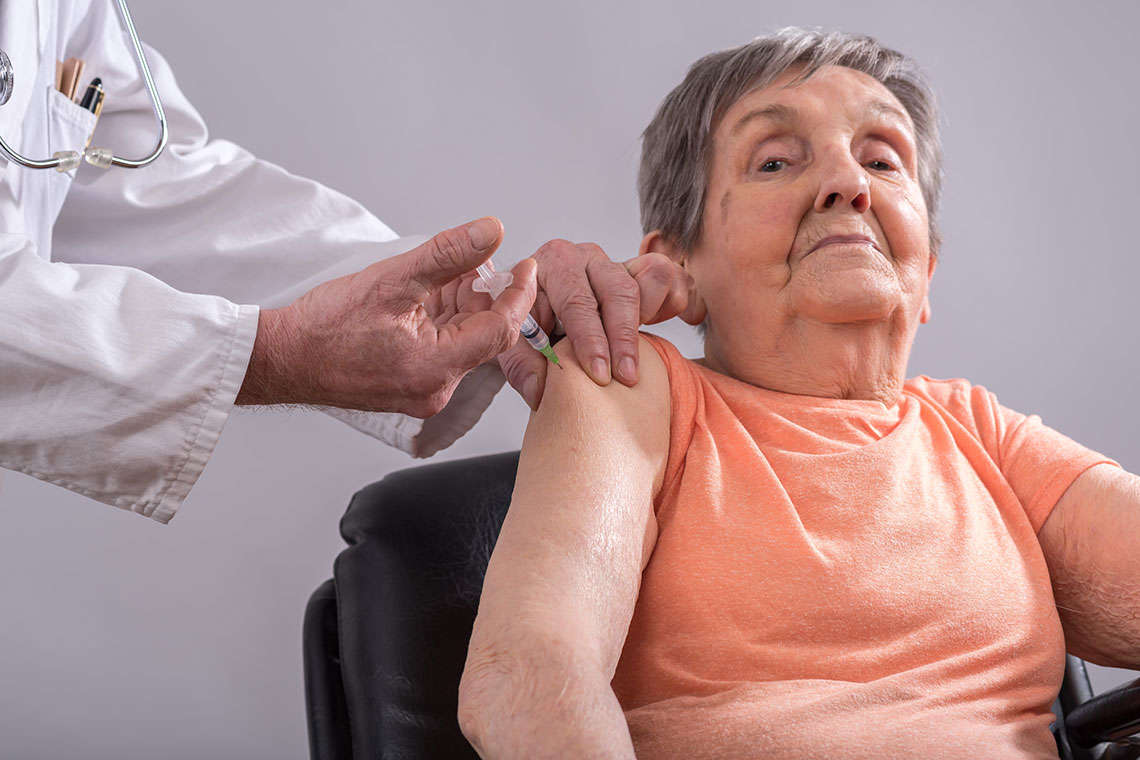Shingrix, the new shingles vaccine, is so much better than the old one that medical experts are urging people who have already had the old vaccine to be revaccinated with Shingrix. But will their advice fall on deaf ears? Many older people fail to have the preventive shots that are available to them. Journalist Michelle Andrews digs into the reasons why in this article written for Kaiser Health News (KHN). The article also ran on NPR. KHN posted it on March 20, 2018.
Federal officials have recommended a new vaccine that is more effective than an earlier version at protecting older adults against the painful rash called shingles. But persuading many adults to get this and other recommended vaccines continues to be an uphill battle, physicians and vaccine experts say.
“I’m healthy, I’ll get that when I’m older,” is what adult patients often tell Michael Munger, MD, when he brings up an annual flu shot or a tetanus-diphtheria booster or the new shingles vaccine. Sometimes they put him off by questioning a vaccine’s effectiveness.
“This is not the case with childhood vaccines,” said Munger, a family physician in Overland Park, KS, who is president of the American Academy of Family Physicians. “As parents, we want to make sure our kids are protected. But as adults, we act as if we’re invincible.”
The new schedule for adult vaccines for people age 19 and older was published in February 2018 following a recommendation [the previous] October by the federal Centers for Disease Control and Prevention’s Advisory Committee on Immunization Practices and subsequent approval by the director of the CDC. The most significant change was to recommend the shingles vaccine that was approved by the Food and Drug Administration last fall, over an older version of the vaccine.
As you age, you’re more likely to develop shingles, and it’s more likely to create chronic problems for you.
The new vaccine, Shingrix, should be given in two doses between two and six months apart to adults who are at least 50 years old. The older vaccine, Zostavax, can still be given to adults who are 60 or older, but Shingrix is preferred, according to the CDC. In clinical trials, Shingrix was 96.6 percent effective in adults ages 50 to 59, while Zostavax was 70 percent effective. The differences were even more marked with age: effectiveness in adults 70 and older was 91.3 percent for Shingrix, compared with 38 percent for Zostavax. Shingrix also provided longer-lasting protection than Zostavax, whose effectiveness waned after the first year.
The guidelines suggest that people who already had the Zostavax shot be revaccinated with Shingrix.
The two-shot series of Shingrix costs about $280, while Zostavax runs $213.
“What’s remarkable [about the new vaccine] is that the high level of immunity persists even in the very old,” said Anne Louise Oaklander, MD, PhD, a neurologist who is an expert on shingles. “It’s pretty hard to get the immune system of older people excited about anything.”
Shingles is caused by the same varicella-zoster virus that causes chickenpox. The virus can re-emerge decades after someone recovers from chickenpox, often causing a painful rash that may burn or itch for weeks before it subsides. About one in three Americans will get shingles during their lifetime; there are roughly one million cases every year. People are more likely to develop shingles as they age, as well as develop complications like postherpetic neuralgia, which can cause severe, long-standing pain after the shingles rash has disappeared. In rare cases, shingles can lead to blindness, hearing loss or death.
Why Don’t More Older People Get Recommended Shots?
Although shingles vaccination rates have inched upward in recent years, only a third of adults who were 60 or older received the Zostavax vaccine in 2016.
Other adult vaccine coverage rates are low as well: 45 percent for the flu vaccine and 23 percent each for pneumococcal and tetanus-diphtheria-pertussis vaccines.
In contrast, by the time children are three years old, typically more than 80 percent of kids, and frequently more than 90 percent, have received their recommended vaccines.
What gives? Cost can be a big deterrent for adult vaccines. The federal Vaccines for Children program helps parents whose kids are eligible for Medicaid or are uninsured cover the cost of vaccines up to age 19.
Adults with private insurance who get vaccines recommended by the CDC also are sheltered from high costs because the shots must be covered by most commercial plans without charging consumers anything out-of-pocket, under a provision of the Affordable Care Act. Patients, however, should confirm their coverage before requesting the new shingles vaccine, because insurers typically add new vaccines gradually to their formularies after they have been added to the recommended list, and consumers may need to wait a little while for coverage.
Older adults sometimes lose track of which vaccines they’ve had, and sometimes there’s no record of what they’ve been given.
But vaccine coverage under the Medicare program for people age 65 and older is much less comprehensive. Vaccines to prevent influenza and pneumonia are covered without a copayment under Medicare Part B, which covers outpatient care.
Other vaccines, including the shingles vaccine, are typically covered under Part D drug plans, which may leave some beneficiaries on the hook for all or part of the cost of the two-shot series.
That can pose a significant problem for patients. “Not every Medicare beneficiary elects Part D, and even if you do, some have deductibles and copayments,” said William Schaffner, MD, an infectious-diseases specialist at Vanderbilt University School of Medicine.
Even if adults want to get recommended vaccines, they sometimes lose track of which they have received and when. Pediatricians routinely report the vaccines they provide to state or city vaccination registries that electronically collect and consolidate the information. But the registries are not widely used for adults, who are more likely to get vaccines at various locations, such as a pharmacy or at work, for example.
“I’m always asking patients, ‘Did you get all the doses in the series?’ ‘Where did you get them?’” said Laura Riley, MD, vice chair of obstetrics at Boston’s Massachusetts General Hospital, who is a member of the Advisory Committee on Immunization Practices. “It can be very challenging to track.”

For more than 15 years, journalist Michelle Andrews has covered many aspects of health care. She’s a contributing writer for Kaiser Health News and wrote a column about health insurance for KHN from 2010 to 2018, delving into what she calls “the devil-in-the-details of medicine, health law and policy.” Her work has also appeared in the New York Times and in Money, National Geographic and other publications.



